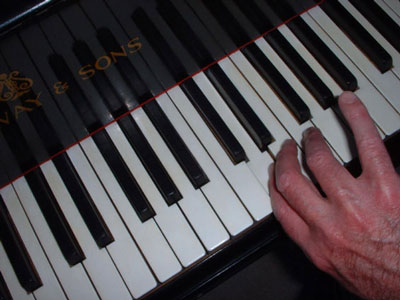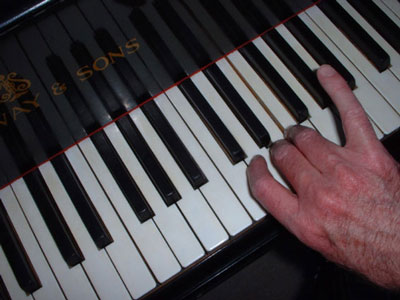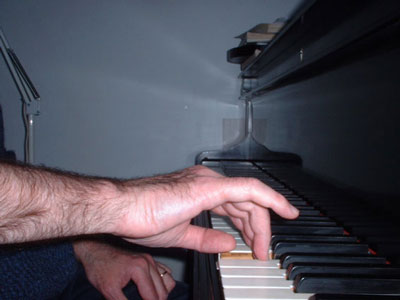|
Richard Beauchamp, April 2004
|
For some
time I have been reluctant to put these pages on the web because I know
how easy it is to misinterpret instructions about rotation in piano
technique. However, I now realise that those who visit these pages are
almost always wise and well balanced people in the first place and
therefore unlikely to take information too literally or any of my advice
to ridiculous extremes - if at all.
|
 |
Rotation
movements are often (but not always) so small as to be almost invisible.
Indeed they are often invisible and then are really only supporting
movements made by the muscles that pronate and supinate. They nevertheless
still make a huge difference to the feel and efficiency of playing the
piano. Bear in mind that, as the scales become faster, the technique
should change, and a different use of rotation becomes appropriate. The
coordination given here would be suitable for semiquavers (sixteenth
notes) up to speeds of about crotchet=160. At faster speeds the thumb will
tend to move under less and will will find its notes more by means of a
'rotary exchange' (see reference under point No. 9). |
| 1. The
thumb has played the C, with the help of a little pronation (anti
clockwise rotation) of the forearm. This also helps to set up a
mechanically advantageous angle for playing the E later on. |
 |
 |
2. The
second finger has just played the D. Note the angle of the third finger
before the E is played. This is so that the finger can be driven directly
into its note when the forearm is rotated clockwise
(supinated).
Note that the second finger has played slightly on its
side to make this possible. |
 |
 |
3. The E
is played by rotating the forearm (supinating) just enough to put the note
down. Note that the third finger is almost vertical to the key, but not
quite. The rotation makes the note and then stops immediately so that
there is no superfluous movement.
The thumb has travelled under the
hand towards the F, but has not quite reached it.
© Copyright: Richard Beauchamp, 2004 |
|